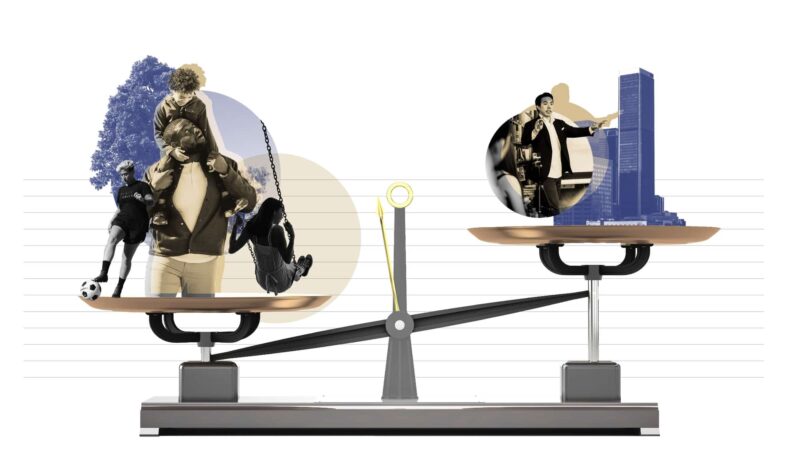Our latest trend report, LIVE. PLAY. WORK. – The Great American Shakeup, uncovers how Americans are reprioritizing their lives as Covid restrictions ease up. Through original research — including a consumer survey of about 1,000 Americans and interviews with experts across multiple industries — it’s clear that people have embraced a more flexible balance of how we live, play, and work.
Yep, that’s “Live, Play, Work,” not “Live, Work, Play.” Priorities have shifted, too.
From hybrid work schedules to home offices to investing in public outdoor spaces, communities and businesses alike will need to change to keep up with Americans’ new, dynamic lifestyle. But what led us here? Surely the pandemic had its impact, but in most cases, Covid accelerated trends that were already well under way.
Here’s just a few of the biggest, long-term trends influencing the future of “Live, Play, Work.”

1. LIVE: The suburban refresh
Survey says: 82% of Americans agree that the suburbs are better than big cities (even the majority of city dwellers agree).
The reality of pandemic-era moves ended up being much less of a dramatic reshuffling than some predicted. But there was sharp growth in suburban rent and home values, as reported in Zillow’s Urban/Suburban Report. As city dwellers continue to foray into the suburbs, we can expect them to bring elements of urban living with them: walkable neighborhoods, an appetite for arts & culture, and a demand for public transit.
But as cities spring back to life and demand outstrips supply in small-town hotspots, the suburban refresh doesn’t necessarily mean the downfall of major metros.
“Despite early-pandemic narratives, suburban areas by and large did not take off at the expense of urban ones over the course of last year. Although suburban homes were selling faster than urban ones by the end of 2020, home value growth, sales volume and Zillow web traffic in urban areas kept pace or exceeded those in the ‘burbs.” — Matt Kreamer, Data PR Manager, Zillow
2. PLAY: Reclaiming cities for the people
Survey says: 75% of Americans agree that cities should section off more car-free streets to create outdoor space for communities.
Even pre-pandemic, cities were starting to question the choice to prioritize cars over people. NYC shut down one of its busiest streets to most traffic to help buses run faster, while San Francisco made a similar call for the famous Market Street.
Now that Covid has made us accustomed to fewer cars on the road and outdoor dining structures claim space on the asphalt, communities are only doubling down on this push for more pedestrian-friendly space. Open street programs can be found in nearly every major city, giving space back to communities. And they’re here to stay — New York is just one of many to extend their open street programs.
“Cars used to dominate planning…But in spite of recent trending toward bikes and scooters – even before Covid – I believe cars will be around for a long time. Remember autonomous vehicles? At some point, with mainstreaming 5G and new technologies, vehicles will evolve. But on-demand rental scooters and bikes will also fill the scene. I doubt the future has a binary outcome.” — Monty Hoffman, Founder & Chairman, Hoffman & Associates
3. WORK: The death of the open plan office
Survey says: 70% of office workers agree that open plan layouts will be a thing of the past.
The pandemic certainly didn’t bring about a sudden revelation that open-plan offices are no good. A 2018 Harvard Business School study found that open-plan offices actually decreased face-to-face interactions, and a survey of office workers that same year found that 65% of creatives need a quiet space to work.
What the pandemic did do was allow companies and employees a moment to step back and seize the opportunity to redefine the office. With a newly hybrid workforce, spaces can finally adjust to accomplish what open plan spaces were supposed to do: foster teamwork, communication, and culture.
“Sitting at a desk and wearing noise-canceling headphones to do work is less logical today when it could be done from home. What cannot happen at home or over Zoom is real connection, collaboration, or socialization. Those are necessary ingredients for innovation, productivity, and building office culture — that is why the office exists.” — Robert Ward, President & CEO of Skanska USA Commercial Development
Don’t have time to read the full report? Download our key takeaways here.